France church attack: 'Gentle' boy who became a killer
- Published
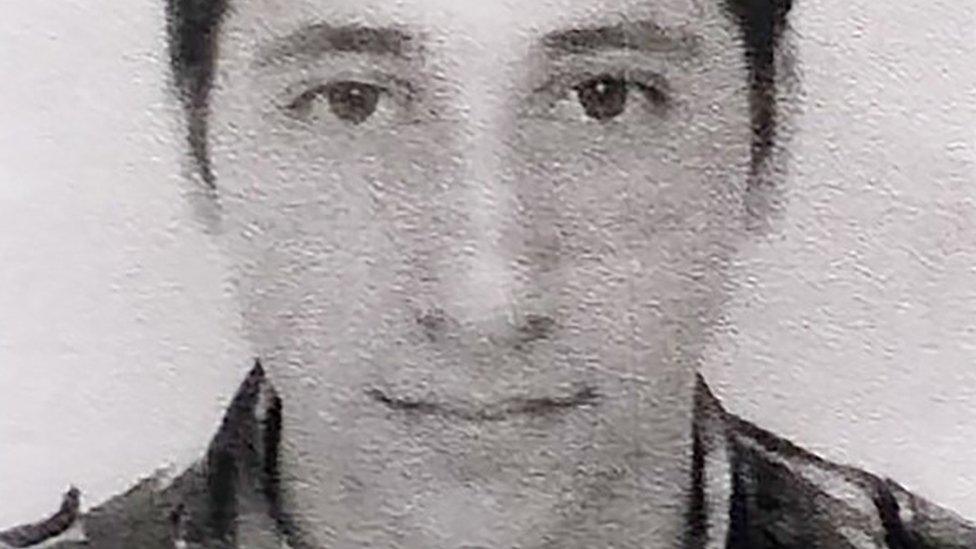
Abdel Malik Petitjean, 19, has been identified as the second man involved in the killing of a priest in a Normandy church on Tuesday.
He and another man, Adel Kermiche, also 19, forced the elderly priest in Saint-Etienne-du-Rouvray to his knees before slitting his throat with a blade and allowing him to bleed to death as they recorded themselves chanting slogans in Arabic. So-called Islamic State (IS) said the two men had pledged allegiance to its leader.
Seven hundred kilometres (430 miles) away in Petitjean's lakeside home town of Aix-les-Bains, in eastern France, those who knew him struggled to believe he could have taken part in such gruesome scenes.
Djamel Tazghat, who looks after the mosque in the suburb where Petitjean lived with his mother, said: "I liked him a lot. We never had a problem with him at the mosque. No strange observations, he was always smiling... It's incredible.
"All the believers are shocked because he was known for his kindness, his calm. We never had any sign of radicalisation. What was going on inside his head?"
Like Kermiche, Petitjean was born to a family of Algerian origin. He spent his early years in the town of Saint-Die-des-Vosges in the Lorraine area of eastern France and later moved south to the spa town of Aix-les-Bains where his mother had a flat in a social housing development.

Petitjean lived in this block of flats in Aix-les-Bains with his mother
French media reports said he had two sisters. There was no immediate information about his father.
Petitjean left school last year and worked part-time in sales jobs. French reports said his interests included watching sci-fi films, playing video games and boxing.
"It is hard to believe. He was against Daesh [IS]," said Hakim, a 17-year-old in Aix-les-Bains, who said he was a friend. "He was not radical at all."
Unlike Kermiche and some other jihadists involved in recent attacks, there had been no signs that Petitjean suffered from psychological problems that might have made him vulnerable.
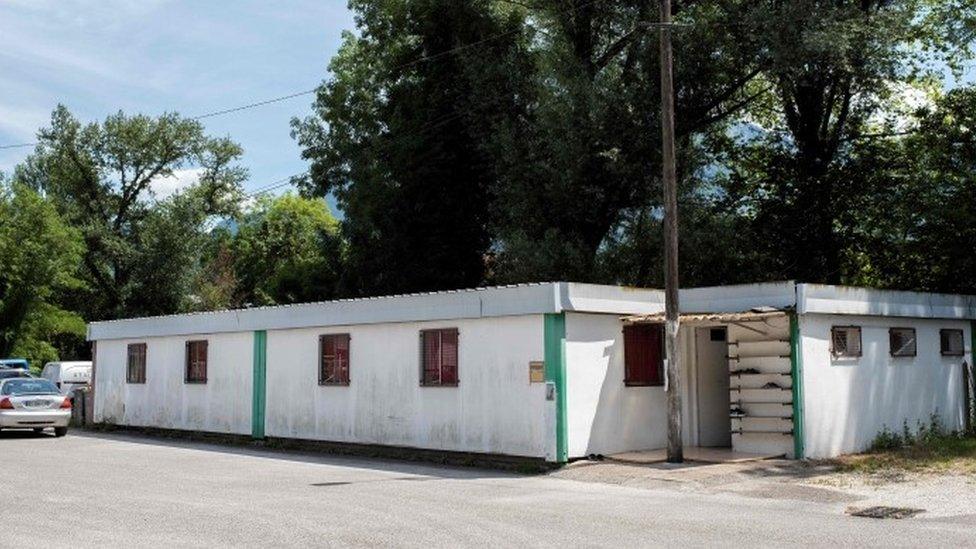
This was the mosque in Aix-les-Bains where Abdel Malik Petitjean prayed
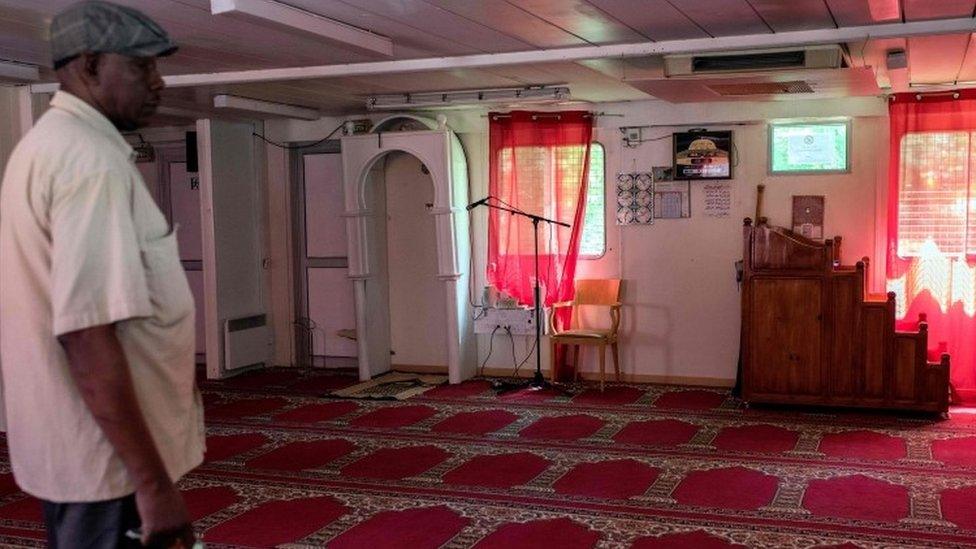
People at the mosque said they saw no signs of radicalisation in Petitjean
However, he was known to the French security services and had been on a watch list, known as the S list, as a potential security threat since June when he made an apparent attempt to join IS in Syria.
For unknown reasons, he turned around in Turkey and slipped back into France.
Then, shortly before the attack in Saint-Etienne-du-Rouvray, French anti-terrorism police received a tip-off from an unnamed foreign intelligence agency that a man may be about to carry out an attack in France.
A photograph of the likely assailant was supplied, but the man's name was not known. A note was circulated among French security units on 22 July but the man was not picked up. French security sources say the man in the photograph is now believed to be Petitjean.
On Monday, three days after the note was sent out, Petitjean left home in Aix-les-Bains, telling his mother, Yamina Boukessoula, he was going to visit a cousin in Nancy.
But instead of going there, he went to Saint-Etienne-du-Rouvray, the suburb of Rouen where Kermiche lived. French investigators are still trying to piece together how they came to know each other and who else they might have been in contact with.

A video released by IS appeared to show Adel Kermiche (L) and Abdel Malik Petitjean
The following morning, shortly before he and Kermiche entered the church, Petitjean sent his mother a final text message, saying: "Don't worry, everything is fine... I love you."
Emerging after the killing, both attackers were shot dead by police. Kermiche, who was awaiting trial on terror charges and wearing an electronic monitoring tag, was quickly identified but there was a delay in naming the second man.
Petitjean was identified after police found ID belonging to him in Kermiche's home and carried out a DNA test, matching that of the corpse with Petitjean's mother.
Ms Boukessoula refused to believe her son could have been involved, telling AFP news agency: "He was a good French citizen. He is gentle. I know my child, I know my son. He was not involved at all."
In other comments to BFM television, she said: "I did not produce a devil. He never talked about Daesh."
- Published28 July 2016
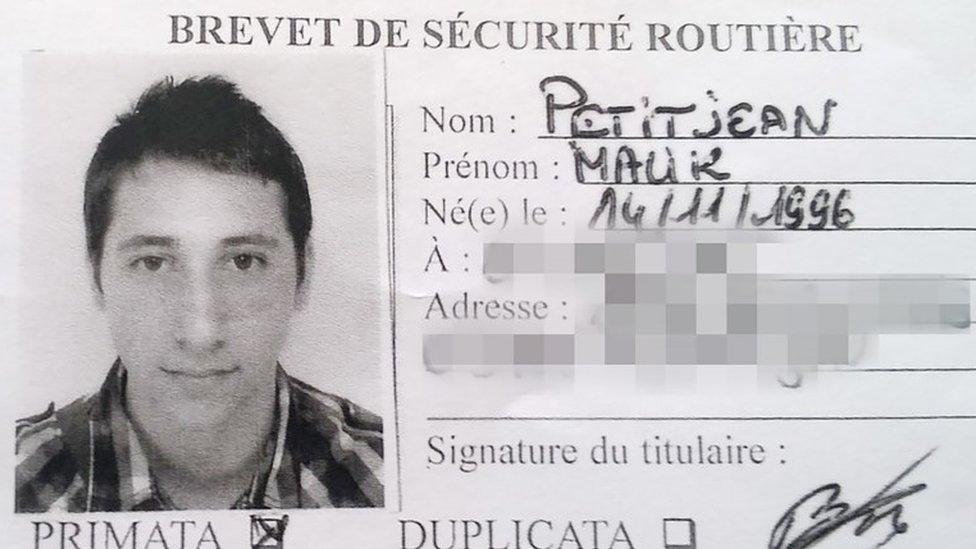
- Published27 July 2016
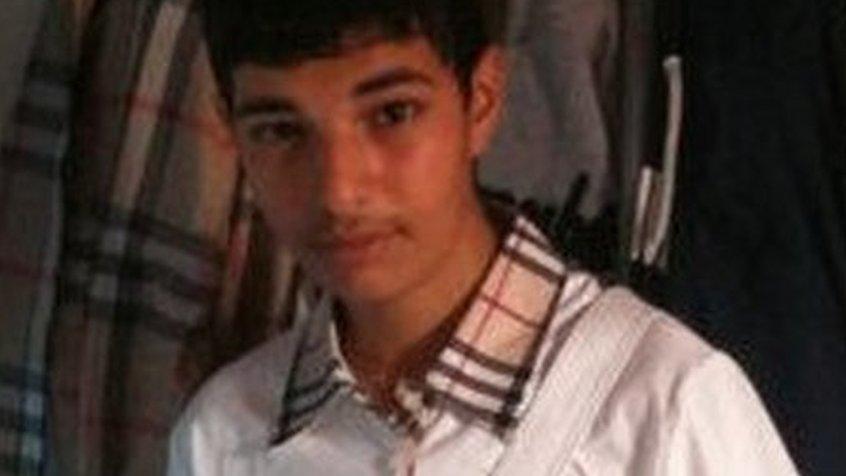
- Published28 July 2016
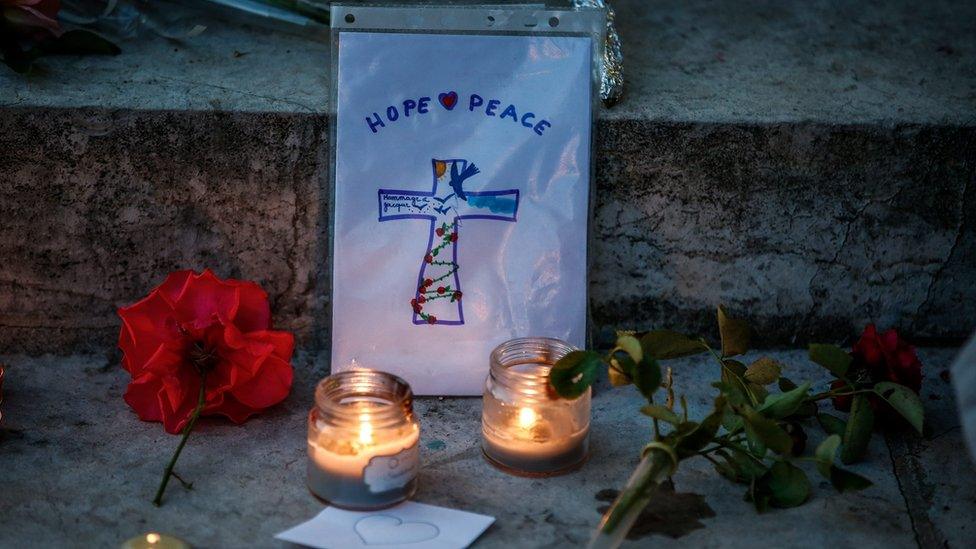
- Published28 July 2016
